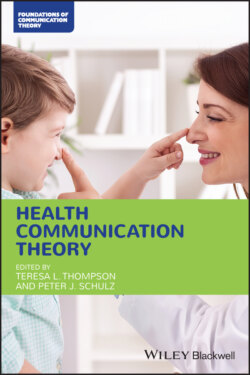Читать книгу Health Communication Theory - Группа авторов - Страница 41
Narrative Medicine
ОглавлениеStorytelling in healthcare reflects the narrative impulse and is a powerful form of experiencing and expressing suffering, loss, and healing (Sharf 1990; Sharf et al. 2011; Vanderford, Jenks, and Sharf 1997). Indeed, healthcare would be impossible if not for the capacities of participants (i.e. patients and providers) to order and represent experience in narrative form (Harter 2013). These clinical encounters involve both patient and provider in the creation and negotiation of a plot structure within clinical time, which Mattingly (1994) termed therapeutic emplotment. Patients story pared‐down autobiographical accounts of illness that reveal lay beliefs about cause and effect, while healthcare providers rely on narrative activity to gather information, keep records, make therapeutic decisions, build relationships with patients, and respond to their concerns in the contexts of their unfolding lives.
The narrative medicine movement signifies growing acknowledgment that clinical judgment is an interpretive act of coupling narrative logics with the scientific reasoning of biomedicine (Harter 2013; Sharf et al. 2011). Widely recognized as the authority in the practice of narrative medicine, Dr. Rita Charon (2006, 2009) – who is both a general internist (with an MD from Harvard University) and a literary scholar (with a PhD from Columbia University) – claims that narrative sensibilities humanize healthcare by enabling providers to join with patients who are suffering and to be responsive to their plight. Narrative medicine (see also Chapter 6) calls for providers to study literary texts to deepen their abilities – what Charon (2006) deems narrative competence – to absorb, interpret, and respond to the stories of others. Because narrative provides an important “road toward empathy and reflection” (Charon 2006, p. 131) by orienting individuals aesthetically and imaginatively to the way they live, literary ways of thinking can help providers adopt contradictory points of view, embrace the metaphorical as well as the factual, and be moved by what they hear (Charon 2006).
Physicians who practice narrative medicine make sense of their patients’ experiences through a mutual dialogue of storytelling and story‐listening. First, they attend to what their patients are saying and how they are saying it; then, they represent what they have witnessed by creating something new, by writing their experiences to perceive and display their thoughts, feelings, and perceptions of the situation (Charon 2006). From this perspective, narratives invite providers to stretch their imaginations to empathically grasp events befalling their patients: “The boldness of the imagination is the courage to relinquish one’s own coherent experience of the world for another’s unplumbed, potentially volatile viewpoint” (Charon 2006, p. 122). Ultimately, narrative medicine is a relational accomplishment: providers must be attentive without becoming overwhelmed, and patients must be willing and empowered to story their experiences (Harter 2013).
